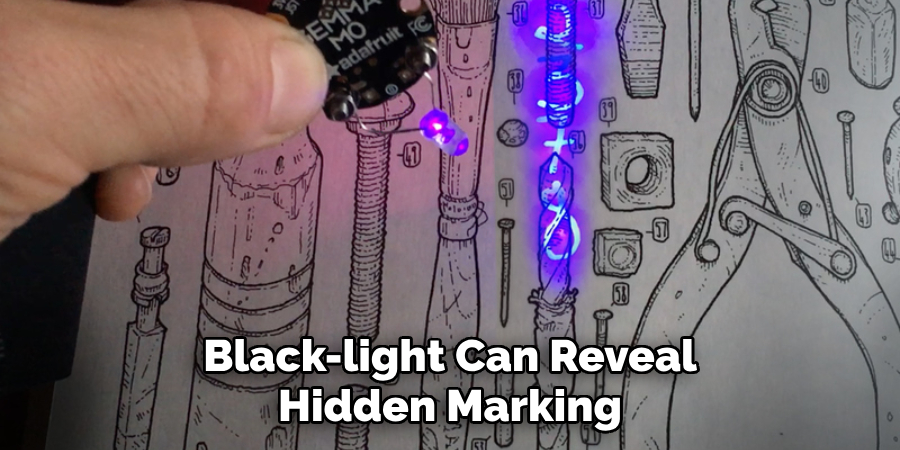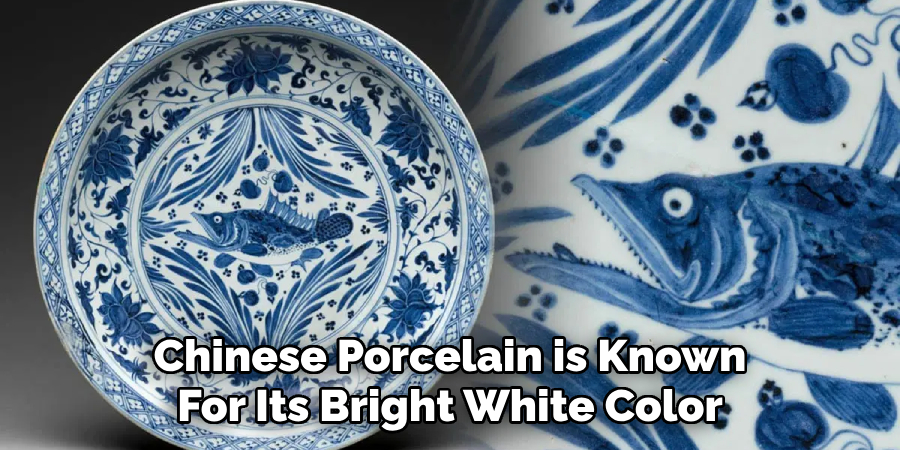Identifying ceramic pottery without visible markings can be a challenging yet rewarding endeavor for collectors and enthusiasts. Understanding the characteristics of pottery, such as its shape, glaze, and design patterns, can provide valuable clues about its origin and age. Without the guidance of the maker’s marks or signatures, recognizing unique attributes and comparing them against known styles and techniques from various regions and time periods is crucial.

This guide on how to identify ceramic pottery with no markings will explore key aspects to consider while identifying unmarked ceramic pieces, equipping you with the knowledge needed to make informed assessments and appreciate the historical significance of each find.
What is Ceramic Pottery?
Ceramic pottery is one of the oldest and most enduring forms of art and utility, dating back thousands of years. It is crafted from natural clay that is shaped and then hardened through a process of firing at high temperatures. This results in a durable and often beautiful product that has been used for centuries in everyday life, from cooking and storage vessels to decorative art pieces.
The versatility and adaptability of ceramic pottery can be seen in its wide array of forms and styles, which vary according to cultural influences and technological advancements. Pottery can be glazed or unglazed, with glazes providing not only decorative effects but also functional benefits such as waterproofing. In essence, ceramic pottery reflects a harmonious blend of practicality and artistic expression, standing as a testament to human creativity and innovation.
Needed Materials
Magnifying Glass:
A magnifying glass is a handy tool for examining pottery details that may not be visible to the naked eye. This could include tiny indentations, brush strokes, or even fingerprints left by the potter.
Black Light:
A black-light can reveal hidden markings on pottery, such as invisible ink signatures or stamps. It can also highlight repairs or restoration work done on a piece.

Reference Books and Online Resources:
Having access to reference books and online resources on ceramic pottery can provide valuable information and aid in identifying different styles, techniques, and time periods.
8 Steps on How to Identify Ceramic Pottery With No Markings
Step 1: Examine the Shape
The shape of a ceramic piece can be a significant factor in determining its origin and age. Different cultures and time periods are characterized by distinct pottery shapes that serve both practical and decorative purposes. Start by analyzing the overall form of the piece, including its base, rim, and body contours. Note any unique features such as handles, spouts, or lids which could be indicative of a particular style or function.
By comparing these attributes to known examples from various regions and eras, you can begin to narrow down the possibilities of when and where the pottery was created. Keep in mind that certain shapes might have persisted over time but were adapted with slight variations, making careful examination essential for accurate identification.
Step 2: Observe the Color and Texture
The color and texture of pottery can often provide valuable clues about its origin. Different types of clay, as well as variations in firing techniques and temperatures, can result in a vast range of colors and textures from smooth to coarse, shiny to matte. Additionally, different regions might have access to specific minerals or pigments that influence the overall appearance of their pottery.
For example, Chinese porcelain is known for its bright white color due to the use of kaolin clay. By familiarizing yourself with the typical colors and textures associated with different styles and regions, you can begin to narrow down your search.

Step 3: Check for Glazes
As mentioned earlier, glazes can serve as both decorative and functional elements of pottery. Identifying the type of glaze used on a piece can provide clues about its origin and age. For instance, lead-based glazes were popular in Europe during the 17th century, while tin-glazed earthenware was commonly used in Italy during the Renaissance period.
Additionally, certain regions might have specific techniques for applying and decorating glazes, which can also aid in identification.
Step 4: Look for Design Patterns
Design patterns are another essential aspect to consider when identifying ceramic pottery. Certain cultures and time periods are known for specific motifs or styles that were prevalent in their artistic expressions. These patterns can range from intricate hand-painted designs to simple geometric shapes.
Pay attention to the placement, size, and symmetry of these patterns, as well as any unique techniques used in their application. This information can help narrow down your search and potentially identify the pottery’s origin.
Step 5: Examine the Base
The base of a ceramic piece can reveal numerous insights about its age, origin, and authenticity. Start by flipping the pottery to maintain a careful examination of its underside. Look for telltale signs such as unglazed portions, which might suggest a certain period or style of manufacturing. Pay attention to the weight and texture as well; heavier bases might be indicative of older, handcrafted items, whereas more refined finishes could point to modern production techniques.
Additionally, inspect for any pontil marks, rings, or pinholes, as these might offer further evidence about the item’s crafting process. Identifying such elements at the base can significantly enhance your understanding of the pottery’s history and provenance, guiding you closer to its true origin.
Step 6: Analyze the Decoration
The decoration on a piece of ceramic pottery can be a valuable source of information for identification. Similar to design patterns, decorative elements such as painted scenes, inscriptions, or symbols can offer insights into the pottery’s geographic and cultural origins. Styles and techniques used in decorating can also vary significantly between regions and time periods, allowing you to narrow down your search further.
For example, Chinese underglaze blue painting is distinctive from Japanese overglaze enamel decoration. By carefully studying the details and methods of decoration, you can gain a better understanding of where the pottery might have originated.

Step 7: Consider the Purpose
Another factor that can aid in identifying ceramic pottery is its intended purpose. Different cultures and time periods used pottery for various functions, such as storage, cooking, or ceremonial offerings. By determining the item’s purpose, you can narrow down your search to a specific type of pottery.
For instance, if the piece was designed for cooking or storing food, it might have characteristics like a flat bottom and thick walls. On the other hand, if it was intended for decorative purposes, it might have delicate features and intricate designs.
Step 8: Seek Expert Opinion
If you are still unsure about the origins of a piece of ceramic pottery after following these steps, consider seeking an expert opinion. Consulting with professionals who specialize in ceramic pottery identification can provide valuable insights and knowledge that might not be readily accessible to a novice collector. These experts can assist you in narrowing down your search or even identify the piece for you based on their expertise and experience.
Following these steps on how to identify ceramic pottery with no markings and continually expanding your knowledge about pottery styles, techniques, and cultures can help you become a more confident and successful ceramic pottery identifier. Happy hunting!
Frequently Asked Questions
Q1: Can Pottery Be Identified Without Any Markings?
A: Yes, it is possible to identify pottery without any markings by following certain steps such as examining the color and texture, checking for glazes, studying design patterns, and analyzing the decoration. Additionally, seeking expert opinion can also aid in identification.
Q2: How Can I Tell the Age of Pottery?
A: Identifying the age of pottery can be challenging without markings. However, some factors like the type of clay, glaze techniques, and decorative elements can provide hints about its age and origin. Consulting with experts or researching similar pieces from different time periods can also help narrow down a piece’s age range. Overall, understanding these various factors and their historical context is crucial for accurately dating pottery without markings.

Q3: Are There Specific Tools Required for Pottery Identification?
A: While having specific tools such as a magnifying glass and measuring tape can be helpful, they are not essential for identifying pottery without markings. However, having a keen eye and knowledge of pottery styles and techniques can significantly aid in the identification process. Additionally, advanced methods such as X-ray fluorescence (XRF) spectroscopy or thermoluminescence dating can be used for more precise analysis but are typically only accessible to trained professionals and museums.
Conclusion
Identifying ceramic pottery without markings can be a challenging yet rewarding endeavor. By following a systematic approach that includes examining the material, glaze, and design patterns, as well as considering the piece’s function and consulting with experts, you can reveal important clues about its origin and history. Though it requires patience and a keen eye, understanding the nuances of different pottery styles and techniques can greatly enhance your ability to identify and appreciate these artistic artifacts.
As you continue to expand your knowledge and collection, each piece of pottery can offer a unique glimpse into the cultural and historical context from which it originated, making the journey of discovery all the more fulfilling. Thanks for reading this article on how to identify ceramic pottery with no markings.
Specialization:
- Master of wheel-throwing, hand-building, and advanced glazing techniques
- Focus on creating both functional pottery and decorative art pieces
Recognition:
- Celebrated by collectors and art enthusiasts for creating one-of-a-kind pieces that blend artistry with functionality
- Participates in local and national exhibitions, earning accolades for his innovative designs and craftsmanship
Passion:
- Deeply committed to exploring and pushing the boundaries of ceramic artistry
- Continuously experiments with new materials, firing techniques, and artistic concepts to evolve his craft
Personal Philosophy:
- Believes in the transformative power of art, aiming to evoke emotions and connections through his ceramic creations
- Advocates for sustainability in ceramics, using eco-friendly materials and practices whenever possible


